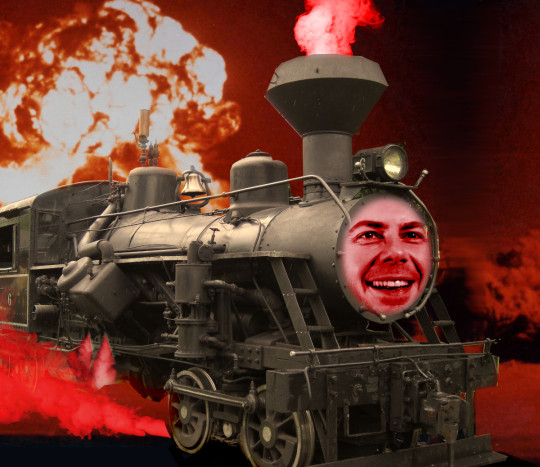#Industrial Control Systems Market Size
Text
Industrial Control Systems Market Anticipates 6.14% CAGR Growth Trajectory

Global Industrial Control Systems (Energy & Power) Market is expected to grow owing to governments and utilities worldwide investing in grid modernization and smart grid initiatives to improve the efficiency and resilience of power distribution throughout the forecast period
According to TechSci Research report, “Industrial Control Systems (Energy & Power) Market - Global Industry Size, Share, Trends, Opportunity, and Forecast 2019-2029”, the Global Industrial Control Systems (Energy & Power) Market is expected to register robust growth during the forecast period. The global push towards sustainable energy solutions, including the integration of renewable energy sources such as solar and wind, is a driving force for the Industrial Control Systems market. ICS plays a crucial role in managing the variability of renewable energy generation, optimizing the integration of these sources into the power grid, and ensuring grid stability.
The evolution towards smart grids represents a significant opportunity for the Industrial Control Systems market. Smart grids leverage advanced control technologies to enhance the efficiency, reliability, and sustainability of electricity distribution. The integration of Industrial Control Systems allows for real-time monitoring, predictive analytics, and adaptive control, enabling utilities to optimize energy distribution, integrate renewable sources, and improve overall grid resilience.
Based on component, the Remote Terminal Unit segment is expected to dominate the market during the forecast period. RTUs are an integral part of Supervisory Control and Data Acquisition (SCADA) systems, forming a cohesive unit for efficient control and monitoring of energy processes. The integration of RTUs with SCADA systems allows for comprehensive visibility into the operation of remote facilities, enabling operators to make informed decisions in real-time. As energy grids become more complex and geographically dispersed, the need for robust SCADA-RTU integration becomes paramount. This integration facilitates centralized monitoring, control, and automation of diverse assets, optimizing the overall performance of the energy infrastructure.
Browse over XX market data Figures spread through XX Pages and an in-depth TOC on the "Global Industrial Control Systems (Energy & Power) Market"
https://www.techsciresearch.com/report/industrial-control-systems-energy-power-market/23011.html
The trend towards a more unified approach to SCADA-RTU integration is driven by the desire to create a seamless and interoperable control system architecture, ensuring reliability and efficiency across the entire energy network. The adoption of RTUs in the Energy and Power sector exhibits regional variances influenced by factors such as regulatory frameworks, investment patterns, and infrastructure development. Developed regions often lead in the adoption of advanced RTU technologies, while emerging markets may prioritize cost-effective solutions for widespread deployment.
Government initiatives, policies, and the overall economic landscape significantly impact the growth of the RTU segment in different regions. Understanding and navigating these regional dynamics is crucial for stakeholders in the Global Industrial Control Systems market. In summary, the Remote Terminal Unit (RTU) segment within the Global Industrial Control Systems (Energy & Power) Market is experiencing robust growth driven by technological advancements, increased demand for remote monitoring and control, and the integration of smart grid technologies. As the energy sector continues to evolve, RTUs will play a pivotal role in ensuring the efficiency, reliability, and security of critical energy infrastructure.
Based on end-user, the Beverage & Food Industry segment is projected to dominate the market throughout the forecast period. While the primary focus of Industrial Control Systems in the Energy & Power sector is on optimizing energy processes, in the Food & Beverage Industry, these systems contribute to energy efficiency within manufacturing facilities. Automated systems can regulate energy usage, such as heating and cooling processes, leading to cost savings and a smaller environmental footprint. Industrial Control Systems enable remote monitoring and maintenance capabilities in the Food & Beverage Industry.
This is particularly beneficial for multinational companies with multiple production facilities. Remote access allows for real-time monitoring of processes, troubleshooting, and implementing updates or adjustments without the need for on-site presence. The integration of Industrial Control Systems with Manufacturing Execution Systems (MES) and Enterprise Resource Planning (ERP) systems is becoming increasingly important in the Food & Beverage Industry. This integration streamlines data flow, enhances communication between different departments, and provides a holistic view of production processes, inventory, and supply chain management.
As with any industry, the Food & Beverage sector faces cybersecurity challenges. Protecting sensitive data, recipes, and production processes from cyber threats is crucial. Industrial Control Systems need robust cybersecurity features, such as secure communication protocols and access controls, to safeguard against potential breaches. In conclusion, the adoption of Industrial Control Systems in the Food & Beverage Industry is driven by the need for efficiency, quality control, regulatory compliance, and adaptability to changing market demands. These systems contribute to the overall optimization of manufacturing processes, ensuring the production of safe, high-quality food and beverage products.
Key market players in the Global Industrial Control Systems (Energy & Power) Market are:-
Emerson Electric Company
Schneider Electric SE
Honeywell International, Inc.
ABB Ltd.
Yokogawa Electric
Metso
Rockwell Automation Inc.
Mitsubishi Electric Corporation
Siemens AG
Fortune
Download Free Sample Report
https://www.techsciresearch.com/sample-report.aspx?cid=23011
Customers can also request for 10% free customization on this report.
“The Global Industrial Control Systems (Energy & Power) Market in North America is poised to be the dominant force in the industry. North America is a significant player in the Global Industrial Control Systems (ICS) market within the Energy and Power sector. The region is characterized by a well-established energy infrastructure, comprising a mix of conventional and renewable energy sources.
The demand for Industrial Control Systems in North America is driven by the need for modernization, efficiency improvements, and the integration of advanced technologies within the energy landscape.” said Mr. Karan Chechi, Research Director with TechSci Research, a research-based global management consulting firm.
“Industrial Control Systems (Energy & Power) Market - Global Industry Size, Share, Trends, Opportunity, and Forecast Segmented By Technology (Manufacturing Execution System, Distributed Control System, Safety Instrumented System and Others), By Component (Remote Terminal Unit, Human-Machine Interface, Surge Protectors, Marking Systems and Others), By End-User (Beverage & Food Industry, Chemical Industry, Life & Medical Science and Others), By Region, and By Competition 2019-2029” has evaluated the future growth potential of Global Industrial Control Systems (Energy & Power) Marketand provides statistics & information on market size, structure, and future market growth. The report intends to provide cutting-edge market intelligence and help decision makers take sound investment decisions. Besides the report also identifies and analyzes the emerging trends along with essential drivers, challenges, and opportunities in Global Industrial Control Systems (Energy & Power) Market.
Browse Related Research
Biomass Power Generation Market
https://www.techsciresearch.com/report/biomass-power-generation-market/15679.html
Commercial Solar PV Inverter Market
https://www.techsciresearch.com/report/commercial-solar-pv-inverter-market/15982.html
Wind Turbine Gearbox Repair and Refurbishment Market
https://www.techsciresearch.com/report/wind-turbine-gearbox-repair-and-refurbishment-market/15931.html
Contact
TechSci Research LLC
420 Lexington Avenue,
Suite 300, New York,
United States- 10170
M: +13322586602
Email: [email protected]
Website: https://www.techsciresearch.com
#Industrial Control Systems Market#Industrial Control Systems Market Size#Industrial Control Systems Market Share#Industrial Control Systems Market Trends#Industrial Control Systems Market Growth
0 notes
Text
#Global Automotive Electronic Throttle Control System Market Size#Share#Trends#Growth#Industry Analysis#Key Players#Revenue#Future Development & Forecast
0 notes
Text
Industrial Control System Security Market size was valued at $10.1 billion in 2020, and it is estimated to grow at a CAGR of 6.1% during 2021-2026.
#Industrial Control System Security Market#Industrial Control System Security Market share#Industrial Control System Security Market size
0 notes
Link
#market research future#industrial control systems#industrial control system size#control systems market
0 notes
Text
#Global Energy Monitoring and Control System (EMCS) Market Size#Share#Trends#Growth#Industry Analysis#Key Players#Revenue#Future Development & Forecast 2023-2032
0 notes
Text
Industrial Control Systems Security Market - Forecast(2023 - 2028)
Industrial Control System Security Market size was valued at $10.1 billion in 2020, and it is estimated to grow at a CAGR of 6.1% during 2021-2026.
more infromation : https://www.industryarc.com/Report/18192/industrial-control-systems-security-market.html?utm_source=tumblr&utm_medium=social&utm_campaign=srilatha
0 notes
Link
#market research future#boiler control market trends#boiler control system industry#boiler control technologies#boiler control market size
0 notes
Link
#market research future#lighting control system market#lighting control system#lighting control systems#lighting industry market size
0 notes
Note
Is there a story behind China's one child policy that makes it not as horrifying as western media claims?
The defining feature of China's development for the past 70 years has been the urban-rural divide. In order to develop a semi-feudal country with a very low industrial level into an industrialised, socialist nation, it was necessary to develop industrial centres. To 'organically' develop industrial centres would have taken many decades, if not centuries of continued impoverishment and starvation, so programs were put in place to accelerate the development of industry by preferentially supporting cities.
Programs like the 'urban-rural price scissors' placed price controls on agricultural products, which made food affordable for city-dwellers, at the direct expense of reducing the income of rural, agricultural areas. This hits on the heart of the issue - to preferentially develop industrial centres in order to support the rest of the country, the rest of the country must first take up the burden of supporting those centres. Either some get out of poverty *first*, or nobody gets out of poverty at all. The result being: a divide between urban and rural areas in their quality of life and prospects. In order to keep this system from falling apart, several other policies were needed to support it, such as the Hukou system, which controlled immigration within the country. The Hukou system differentiated between rural and urban residents, and restricted immigration to urban areas - because, given the urban-rural divide, everyone would rather just try to move to the cities, leaving the agricultural industry to collapse. The Hukou system (alongside being a piece in many other problems, like the 'one country two systems', etc) prevented this, and prevented the entire thing from collapsing. The 'one child policy' was another system supporting this mode of development. It applied principally to city-dwellers, to prevent the populations of cities expanding beyond the limited size the agricultural regions could support, and generally had no 'punishments' greater than a lack of government child-support, or even a fine, for those who still wanted additional children. Ethnic minorities, and rural residents, were granted additional children, with rural ethnic minorities getting double. It wasn't something anyone would love, but it served an important purpose.
I use the past-tense, here, because these systems have either already been phased out or are in the process of being phased out. The method of urban-rural price scissors as a method of development ran its course, and, ultimately, was exhausted - the negative aspects, of its underdevelopment of rural regions, began to overwhelm its positive aspects. So, it was replaced with the paradigm of 'Reform and Opening Up' around the 1980s. Urban-rural price scissors were removed (leading to protests by urban workers and intellectuals in the late '80s), and the Hukou system, along with the 'one child policy', were and are being slowly eased out as lessening inequality between the urban and rural areas make them unnecessary. Under the new system, the driver of development was no longer at the expense of rural regions, but was carried out through the internal market and external capital. The development paradigm of Reform and Opening Up worked to resolved some contradictions, in the form of the urban-rural divide, and created some of its own, in the form of internal wealth divisions within the cities. Through it, over 800 million people were lifted out of extreme poverty - almost all of them being in rural areas - and extreme poverty was completely abolished within China. 'Extreme poverty' can be a difficult thing for westerners to grasp, wherein poverty means not paying rent on time, but to illustrate - many of the last holdout regions of extreme poverty were originally guerrilla base areas, impassable regions of mountainside which were long hikes away from schools or hospitals, wherein entire villages were living in conditions not dissimilar to their feudal state a century before. These villages were, when possible, given infrastructure and a meaningful local industry accounting their environment and tradition (like growing a certain type of mountainous fruit), or entirely relocated to free government-built housing lower down the mountain that was theirs to own. These were the people the 'one child policy' was aiding, by reducing the urban population they had to support. Again, there were exemptions for rural and ethnic minority populations to the policy.
Even now, Reform and Opening Up is running its course. Its own negative aspects, such as urban wealth inequality, are beginning to overcome its positive aspects. So, the new paradigm is 'Common Prosperity', which will work to resolve the past system's contradictions, and surely introduce its own contradictions in the form of chafing against the national bourgeoisie, as it increases state control and ownership of industry, and furthers a reintroduced collectivisation. Organising a nation of well over a billion people is not simple. It is not done based on soundbytes and on picking apart policies in the abstract for how 'dystopian' they sound. It is an exceedingly complex and interconnected process based on a dialectical, material analysis of things; not a utopian, idealist one. What matters is this: those 800,000,000 people now freed from absolute poverty. The things necessary to achieve that were, unquestionably, good things - because they achieved that. They had their negative aspects, as does everything that exists, but they were unquestionably correct and progressive things.
846 notes
·
View notes
Video
youtube
How Amazon Is Ripping You Off
Shopping on Amazon? Stop! Watch this first.
Amazon is the world’s biggest online retailer. This one single juggernaut of a company is responsible for nearly 40% of all online sales in America. In an FTC lawsuit, they’re accused of using their mammoth size, and consumers’ dependence on them, to artificially jack up prices as high as possible, while prohibiting sellers on Amazon from charging lower prices anywhere else.
They’re accused of using a secret algorithm, codenamed "Project Nessie," to charge customers an estimated extra $1 billion dollars,
If this isn’t an abuse of power that hurts consumers, what is? So much for all of those “prime” deals you thought you were getting.
Project Nessie isn’t the only trick Amazon has been accused of using to exert its hulking dominance over the online retail industry — leading to higher prices for you.
Much of the FTC’s antitrust lawsuit centers around the treatment of independent merchants who sell items on Amazon’s online superstore — accounting for 60 percent of Amazon's sales.
Amazon allegedly uses strongarm tactics that force these sellers to keep their prices higher than they need to be. Like barring them from selling products for significantly less at other stores — or else risk being hidden in Amazon’s search results or having their sales stopped entirely.
And Amazon is accused of engaging in pay-to-play schemes and charging merchants excessive fees that end up costing you even more.
Independent sellers are effectively forced to pay Amazon to advertise their products prominently in search results. If they don’t fork over cash, then their products get buried underneath products of companies who do. This hurts sellers but also harms shoppers who have to parse through less relevant products that may be more expensive or lower quality.
And to be eligible for the coveted “Prime” badge on their items — which is considered crucial for competing on the platform — independent sellers are pushed into paying Amazon for additional services like warehousing and shipping, even if they could get those services cheaper elsewhere. If sellers forgo trying to qualify for Prime, their goods apparently become harder for customers to find.
When all of these extra fees are added up, Amazon takes around a 50 percent cut of each sale made by a third party. It’s projected that Amazon will earn around $125 billion from collecting fees in the U.S. in 2023, most of which get passed on to you.
By charging all of these extra fees and stifling independent companies from selling their products for less elsewhere, Amazon is using its dominance to essentially set prices for all consumers across the internet.
And when you combine Amazon’s control of ecommerce with all of the other industries it has entered by gobbling up companies — such as Whole Foods, One Medical, and MGM — you’re left with a behemoth that simply has too much power.
This is all part of a much larger problem of growing corporate dominance in America. In over 75% of U.S. industries, fewer companies now control more of their markets than they did twenty years ago.
The lack of competition and consumer choice has resulted in all of us paying more for goods because corporations like Amazon can raise their prices with impunity. By one estimate, corporate concentration has cost the typical American household $5,000 a year more than they would have spent if markets were truly competitive.
This power isn’t just being used to siphon more money from you. A giant corporation has the power to bust unions, keep workers’ wages low, and funnel money into our political system.
It’s a vicious cycle, making giant corporations more and more powerful.
But under the Biden administration, the government is making a strong effort to revive antitrust law and use its power to reign in big corporations that have grown too powerful.
We must stop the monopolization of America. This FTC lawsuit against Amazon is a great start.
522 notes
·
View notes
Text
These claims of an extinction-level threat come from the very same groups creating the technology, and their warning cries about future dangers is drowning out stories on the harms already occurring. There is an abundance of research documenting how AI systems are being used to steal art, control workers, expand private surveillance, and seek greater profits by replacing workforces with algorithms and underpaid workers in the Global South.
The sleight-of-hand trick shifting the debate to existential threats is a marketing strategy, as Los Angeles Times technology columnist Brian Merchant has pointed out. This is an attempt to generate interest in certain products, dictate the terms of regulation, and protect incumbents as they develop more products or further integrate AI into existing ones. After all, if AI is really so dangerous, then why did Altman threaten to pull OpenAI out of the European Union if it moved ahead with regulation? And why, in the same breath, did Altman propose a system that just so happens to protect incumbents: Only tech firms with enough resources to invest in AI safety should be allowed to develop AI.
[...]
First, the industry represents the culmination of various lines of thought that are deeply hostile to democracy. Silicon Valley owes its existence to state intervention and subsidy, at different times working to capture various institutions or wither their ability to interfere with private control of computation. Firms like Facebook, for example, have argued that they are not only too large or complex to break up but that their size must actually be protected and integrated into a geopolitical rivalry with China.
Second, that hostility to democracy, more than a singular product like AI, is amplified by profit-seeking behavior that constructs increasingly larger threats to humanity. It’s Silicon Valley and its emulators worldwide, not AI, that create and finance harmful technologies aimed at surveilling, controlling, exploiting, and killing human beings with little to no room for the public to object. The search for profits and excessive returns, with state subsidy and intervention clearing the way of competition, has and will create a litany of immoral business models and empower brutal regimes alongside “existential” threats. At home, this may look like the surveillance firm and government contractor Palantir creating a deportation machine that terrorizes migrants. Abroad, this may look like the Israeli apartheid state exporting spyware and weapons it has tested on Palestinians.
Third, this combination of a deeply antidemocratic ethos and a desire to seek profits while externalizing costs can’t simply be regulated out of Silicon Valley. These are fundamental attributes of the industry that trace back to the beginning of computation. These origins in optimizing plantations and crushing worker uprisings prefigure the obsession with surveillance and social control that shape what we are told technological innovations are for.
Taken altogether, why should we worry about some far-flung threat of a superintelligent AI when its creators—an insular network of libertarians building digital plantations, surveillance platforms, and killing machines—exist here and now? Their Smaugian hoards, their fundamentalist beliefs about markets and states and democracy, and their track record should be impossible to ignore.
311 notes
·
View notes
Text


Glock Pistols Series (Tribute to Gaston Glock)
GET YOURS HERE!!!
Just remastered some old works of the Glock Pistol Series as a tribute to the late Gaston Glock, the inventor of the Glock Pistol that has significantly contributed to the firearms industry since 1982. Rest in peace, sir. Your legacy will remain in our hearts, and your contribution to the firearms industry, especially pistols in Late 20th Century. Sorry For Late Tribute Post. I Need to Find the Best Glock Model for this Tribute and Improving the Existing Models
Thank you @exzentra-reblog @coffee-cc-finds @bdangkingfish @evgenyesipov1999 @sparkiekong @helenofsimblr @igglemouse
Known for its distinct shape like a box, Glock emphasizes its tradition of perfection in almost every design they issue. The journey began in 1982 when Glock Ges.mbH introduced their 17th patent, which would later be known as the Glock 17. It is a 9mm-chambered pistol that would change the mindset of the sidearm industry. Although not the first polymer-made pistol (the first was an HK VP70), it offered the value of a lightweight, high-capacity magazine pistol. The Glock 17 entered the US market in 1986. Despite initial rejection by both Glock and the US Military as a replacement for the 1911, Glock started to capture the attention of American police departments (PDs).
By 1987, it began to be adopted by police departments, with others following suit in issuing Glocks as their standard sidearm. The key to Glock's success in police departments lies in its affordable price, ease of maintenance, numerous interchangeable parts, and, of course, the double-trigger system. Although it may be challenging to execute a follow-up shot quickly, it ensures safety when the pistol is not in use. Additionally, this sidearm is popular for deployment alongside the Secret Service.
In this case, VVE covers some of the Glock series to the SimVerse usage, like :
Standard
Standards Glocks are full-sized pistols that are designed for duty and home defense use. Barrel lengths are 4.49 inches and 4.61 inches depending on caliber. Standard-sized Glocks are some of the most commonly sold pistols and strike the right balance between size, weight, and controllability.
Glock 17
The Glock 17 is the original 9×19mm Parabellum model, with a standard magazine capacity of 17 rounds, introduced in 1982. Glock also offers a version of the standard magazine which incorporates a longer "+2" base plate to provide a capacity of 19 rounds. Also, a 10-round version of the standard magazine was created for markets that restrict the magazine capacity of handguns. And, Glock offers an extended 24 round (with flush base plate) magazine for the Glock 17. Finally, the Glock 17 can use the Glock 18's extended 33 round (with +2 base plate) magazine. The base plates for the extended magazines can be swapped out to create 26 and 31 round magazines as well



Thank you For @effiethejay For NYPD Uniform!
Glock 22
Also a standard-barrel version, but in this case, with a silver sliding) in Reality this is Just A Glock 17 Chambered with 40 Smith & Wesson for Better Punch. Perfect Pistol For FBI And Law Enforcement who looking better Punch but Maintain Controllability.


GLOCK 18
The Glock 18 is a Select Version variant of the Glock 17, designed for the Austrian counter-terrorist unit EKO Cobra. Introduced in 1986, it features a selective-fire option, allowing both fully automatic (1,100–1,200 RPM) and semi-automatic firing modes. The circular selector switch on the rear left side of the slide controls the firing mode. The pistol is often equipped with a 33-round magazine and can be used with or without a shoulder stock for added stability. This Particular Model is First Production of Glock 18 which marked by Extended Barrel and Lack of Compensator to Reduce the Recoil.


Thank you For @plazasims For Jill Valentine outfit & @mimoto-sims For Pose
GLOCK 18C
The Improved Model Of Glock 18. The compensator cuts start about halfway back on the top of the barrel. The two rear cuts are narrower than the two front cuts. The slide is hollowed, or dished-out, in a rectangular pattern between the rear of the ejection port and the rear sight. The rate of fire in fully automatic mode is around 1,100–1,200 rounds per minute. Most of the other characteristics are equivalent to the Glock 17, although the slide, frame, and certain fire-control parts of the Glock 18 are not interchangeable with other Glock models.


Thank you For @pandorassims4cc For Pose
Compact
Compact is a relative term. These Glocks are still somewhat large with barrel lengths of 4.02 inches and grips that fill your hand. The slightly shorter grip and barrel length allow them to be easier to conceal and more comfortable to carry while maintaining control over the gun. That being said, this is the most popular category of the Glock sizes.
GLOCK 19



The Glock 19 is effectively a reduced-size Glock 17, called the "Compact" by the manufacturer. It was first produced in 1988, primarily for military and law enforcement. The Glock 19's barrel and pistol grip are shorter by about 12 mm (0.5 in) than the Glock 17, and it uses a magazine with a standard capacity of 15 rounds. A 10 round version of this magazine is also made for markets that restrict the magazine capacity of handguns. And, a "+2" base plate can make the standard magazine into a longer 17 round magazine. The pistol is also compatible with any magazines designed for the Glock 17 and Glock 18, providing factory magazine capacities of 17, 19, 24 and 33. Changing out base plates adds capacities of 26 or 31 rounds.
Subcompact
Subcompact Glocks are designed to be concealed carry weapons and backup guns. These guns sport ultra-short frames, and barrel lengths vary between 3.43 inches and 3.78 inches depending on caliber. These guns are straightforward to carry and conceal in almost any way you want.


The Glock 26, a 9×19mm "subcompact" variant designed for concealed carry, was introduced in 1995, primarily for the civilian market. It has also been acquired by the US military and designated MK 26. Featuring a smaller frame compared to the Glock 19, the pistol grip supports only two fingers, and it has a shorter barrel and slide, along with a double-stack magazine with a standard capacity of 10 rounds. A factory magazine with a +2 extension gives it a capacity of 12 rounds. Additionally, the Glock 26 can use factory magazines from the Glock 17, Glock 18, and Glock 19. One can swap out base plates to give it capacities of 15, 17, 19, 24, 26, 31, and 33 rounds. More than simply a "shortened" Glock 19, the design of the subcompact Glock 26 required extensive rework of the frame, locking block, and spring assembly, which features a dual recoil spring.
Competition & Long Slide
By bigger than full-size, we are talking about guns mostly made for competition shooting. They have standard sized frames but longer slides and barrels. The longer slide and barrel gives a longer sight radius and a higher velocity, as well as less recoil and muzzle flip.
GLOCK 34
The Glock 34 is a competition version of the Glock 17. It is similar to its predecessor, the Glock 17L, but with a slightly shorter slide and barrel, to meet the maximum size requirements for many sanctioned action pistol sporting events. It was developed and produced in 1998, and compared to the Glock 17, features a 21 mm (0.8 in) longer barrel and slide. It has an extended magazine release, extended slide stop lever, 20 N trigger pull, and an adjustable rear sight. The sides at the front of the slide are slanted instead of squared. Further, the top of the slide and parts of its inside are milled out, creating a conspicuous hole at the top designed to reduce front-end muzzle weight to better balance the pistol and reduce the overall weight of the slide. The Glock 34 can accept any magazine the Glock 17 can accept.


#the sims 4#the sims#the sims 4 custom content#ts4#ts4 cc#the sims 4 military#ts4military#the sim#the sims 4 cc#ts4cc#ts4 gun#the sims 4 gun#ts4 military#gaston glock#glock#glock 19#glock 17#firearms#austria#ts4 download#ts4 cas#sims 4#ts4 simblr
30 notes
·
View notes
Text
Industrial Control System Security Market size was valued at $10.1 billion in 2020, and it is estimated to grow at a CAGR of 6.1% during 2021-2026.
#Industrial Control System Security Market#Industrial Control System Security Market share#Industrial Control System Security Market size
0 notes
Text
Ateez's Full Storyline Explained - Part 0
Masterlist
Glossary (contains spoilers!)
A-World
home of an alternate version of our Ateez
a city made up of a maze of cement walls and deserted side roads
their hideout is an abandoned factory/warehouse
Ateez viewed their music and dance as dull and insignificant due to their belief that it couldn't have an impact on people
the members were about to part ways indefinitely before their journey to the Z-World began

Z-World
Halateez's/Black Pirates' World (also referred to as Strictland)
the 4th Industrial Revolution already took place and led to a 200 year average lifespan and 40 years of education
the central government, aka the Sciensalvar political party led by 'Z', wants absolute power
-> to remove all possible unpredictable variables keeping them from achieving this, they developed a self-learning A.I. system
-> their ultimate conclusion drawn from this system's gathered data: the only thing keeping them from achieving absolute power is human emotions
-> as a result, they prohibited all forms of art and emotional expression

Cromer
For more details and a full list of its abilities, click here
appearance of an hourglass
enables travel between realities and into another's dreams, as well as teleportation while in direct contact with the object

Sciensalvar
The name "Sciensalvar" is likely just a combination of "Scien" from "science" and "salvar" which is Spanish for "to save, to rescue" - saved by science
In the A-World:
"religious" organization founded in 1999, led by Henry Jo (a scientist of some kind)
ideology: humans are a collection of energy, science can resolve uncertainties of the future, the energy in the Cromer can save humanity
never appeared outside of the Fever Epilogue Diary Version
In the Z-World:
pseudo-religious scientific organization spearheaded by 'Z'
invented the AI simulation for the 'best solution'
created a political party under the catchphrase: "The pursuit of a peaceful world without religious conflict and terror through emotional control."
said party grew in size until they were powerful enough to pass the 'Emotional Regulation Act' which lead to the solidification of the class system to the point where 'defective' people are now being 'disposed of'.
Android Guardians
only exist in the Z-World
tall, wearing white masks, decidedly non-human
burn people's memories as an energy source
-> the resulting smoke gets them drunk
-> this new energy market was created by the government's A.I.
their mission: obtain the Cromer, capture Ateez, the Black Pirates/Halateez and their supporters/sympathizers, as well as anyone deemed 'defective'
take orders exclusively from the Head Guardian, Z and presumably also the Sciensalvar party
guard the prison island (a bunker formerly used as an art gallery) and Z's hideout due to their non-human nature which prevents emotional corruption by revolutionists

Halateez/The Black Pirates
resistance fighters in the Z-World
mission: overthrow the government and free people's minds by returning the arts to Strictland
-> use the prohibited arts as a weapon
-> the alternate version of A-World's Ateez and their supporters

Left Eye
lives in Z-World where he used to run a boutique after studying fashion design
his daughter was killed by a speeding car while trying to save a flower on the road
-> she died slowly while passersby ignored her, too focused on moving forward
the yellow fumes of the Strictland dump made him hallucinate his dead daughter, trapping him
-> the Android Guardians found him there and made him the dump's new manager
he later becomes an ally to the revolution

Thunder
originally a group of elite students at Prestige Academy in charge of reporting any students who show emotions who have now joined the resistance
their leader: a girl resembling the one Seonghwa saw dance back in the A-World who dropped a bracelet inscribed with the words 'Be Free', she was inspired by the Grimes Siblings (who first helped Ateez when they arrived in the Z-World) to join the resistance
as the elitest of the elite who were supposed to be the future leaders of Strictland, they have access to top secret information on Z and are willing to share it with the Black Pirates to free everyone
their home base is located in a forest village away from all surveillance
148 notes
·
View notes
Text
#Global Microfluidic Flow Control System Market Size#Share#Trends#Growth#Industry Analysis#Key Players#Revenue#Future Development & Forecast 2023-2032#global market insights#global research market report#global market report
0 notes
Text
After Ohio rail disaster, Buttigieg is silent on restoring the safety standards Trump repealed

When a freight train carrying toxic chemicals derailed near East Palestine, Ohio, bursting into flame and sending up clouds of poisonous vinyl chloride smoke and gas, our immediate concerns were for the people in harm’s way and the train crew:
https://www.nytimes.com/2023/02/04/us/train-derailment-fire-palestine-ohio.html
If you’d like an essay-formatted version of this post to read or share, here’s a link to it on pluralistic.net, my surveillance-free, ad-free, tracker-free blog:
https://pluralistic.net/2023/02/11/dinah-wont-you-blow/#ecp
But those immediate concerns were soon joined by a broader set of worries: that the entire rail industry presented a systematic danger, and the Ohio derailment was a symptom of a much deeper pathology that endangered anyone who lives near one of the rail corridors that crisscross America.
The rail industry is the poster child for corporate power, and rail barons were among the first targets of Gilded Age trustbusters who saw the rail monopolies as a threat to the prosperity and wellbeing of Americans, as well as the integrity of the American political system itself.
40 years of neoliberal “consumer welfare” antitrust — starting with Reagan and continuing through every administration since — has seen the American rail sector achieve levels of concentration that meet and exceed the corrupt, untenable degree of the late 19th century.
Like the original rail barons, the current crop (including the self-styled cuddly billionaire Warren Buffett), have gutted rail investment, skirted on safety, maimed and abused their workforce, smashed their unions, and placed the entire US supply chain in a state of brittle precarity:
https://pluralistic.net/2022/02/04/up-your-nose/#rail-barons
Like all monopolists, the rail industry has been able to capture its regulators, trampling evidence-based policy and replacing it with rules that benefit shareholders at the expense of the public, labor, and customers.
https://doctorow.medium.com/regulatory-capture-59b2013e2526
This regulatory capture is an inevitable consequence of market concentration. When an industry is composed of dozens of small- and medium-sized firms, they are unable to converge on a single story about which rules regulators should favor them with: some of those companies will want things the others don’t, and each will vie to produce evidence disconfirming the others’ claims.
But when an industry dwindles to a handful of cozy giants whose C-suites are stuffed with company-hopping executives who’ve done time at every major company in the sector, they converge on a single fairy tale about the best way to regulate their industry, and convert their regulators’ truth-seeking exercises into rigged auctions that they handily win:
https://locusmag.com/2022/03/cory-doctorow-vertically-challenged/
That’s what happened during the Trump years, when rail lobbyists secured the repeal of a long-overdue, hard-won safety regulation that would have required rail companies to replace the Civil-War-era brakes on their rolling stock with modern electronically controlled pneumatic brakes (ECPs):
https://jacobin.com/2023/02/rail-companies-safety-rules-ohio-derailment-brake-sytems-regulations
The repeal cost millions in lobbying dollars, but it was worth it. Shortly after the ECP rule was scrapped, Norfolk Southern handed millions in bonuses to its execs and did billions in stock buybacks, while laying offf thousands of workers:
https://www.fool.com/investing/2018/10/25/norfolk-southern-implements-massive-buyback-progra.aspx
Elections, we’re told, have consequences. After Biden won the 2020 presidential election, he made a string of excellent appointments — people like FTC chair Lina Khan, who hit the ground running with detailed plans for making sweeping, consequential changes that would blunt corporate power, reverse-Trump era abuses, and correct the dysfunctions that created a political base for Trump:
https://www.eff.org/deeplinks/2021/08/party-its-1979-og-antitrust-back-baby
But other Biden appointees arrive in office with much less ambition. Transportation Secretary Pete Buttigieg has spent his tenure as King Log, failing to take action on spiraling airline cancellations, confining his major enforcement action to fining foreign airlines while ignoring the out-of-control abuses of America’s domestic carriers, except for the also-ran airline Frontier, which accounts for less than 2% of domestic travel:
https://pluralistic.net/2023/01/16/for-petes-sake/#unfair-and-deceptive
There are striking similarities between the structural defects in the airlines and the rail companies: both are highly concentrated sectors who have laid off senior staff, attacked unions, and blown billions in public money on stock buybacks and executive bonuses, even as their service degraded.
Both industries have been sharply criticized by experts and industry veterans, who’ve called for specific regulation. In the case of the airlines, SWA pilots and flight attendants had sounded the alarm about antiquated scheduling systems; for the rail companies, it’s experts like Grady Cothen, formerly a top safety expert at the Federal Railroad Administration (FRA), who told Congress that without action on braking systems, “[there] will be more derailments, more releases of hazardous materials, more communities impacted”:
https://www.congress.gov/event/117th-congress/house-event/LC69424/text?s=1&r=9
Despite these warnings, and despite the near-misses and smaller disasters that led up to the 100-foot-tall fireball over Ohio, Buttigieg’s DOT has not moved to reinstate the Obama-era brake safety rule, deferring to the monopoly rail owners self-serving claim that there is no need for such a move:
https://jacobin.com/2023/02/department-of-transportation-train-brake-regulation-ohio-derailment/
Indeed, the FRA is currently considering a rule that would further weaken braking rules, reducing obligations to inspect, test and certify braking systems:
https://www.regulations.gov/document/FRA-2019-0072-0005
The rail labor unions — the best source of independent expertise on the daily operation of the freight system — say that this would be a disaster: “Following through with a final rule would only deliver yet another financial windfall to rail carriers by eliminating inspections, testing and repairs, and deferring routine maintenance”:
https://www.goiam.org/news/territories/tcu-union/carmen-division-tcu/rail-labor-files-joint-comments-on-fras-nprm-2/
Serving as Transportation Secretary to the President of the United States of America makes you one of the most powerful people in the history of the human race. The Secretary’s powers, while not unlimited, are extensive. The American people need a DoT that works for them, not one that weakens safety rules:
https://pluralistic.net/2023/01/10/the-courage-to-govern/#whos-in-charge
Image:
Gage Skidmore (modified)
https://commons.wikimedia.org/wiki/File:Pete_Buttigieg_January_2020.jpg
CC BY-SA 2.0
https://creativecommons.org/licenses/by-sa/2.0/deed.en
James St John (modified)
https://www.flickr.com/photos/jsjgeology/27110172823/
CC BY 2.0
https://creativecommons.org/licenses/by/2.0/
This week (Feb 13–17), I’ll be in Australia, touring my book Chokepoint Capitalism with my co-author, Rebecca Giblin. We’re doing a remote event for NZ tomorrow (Feb 13). Next are Melbourne (Feb 14), Sydney (Feb 15) and Canberra (Feb 16/17). More tickets just released for Sydney!
[Image ID: A locomotive steaming away from a nuclear explosion. The face of the logo has been replaced with Transportation Secretary Pete Buttigieg's, in the style of Thomas the Tank Engine.]
#pluralistic#railroads#trains#freight#department of transport#pete buttigieg#monopolies#transport#dot#federal railroad administration#ohio#fra#ecp#electronically controlled pneumatic brakes
84 notes
·
View notes